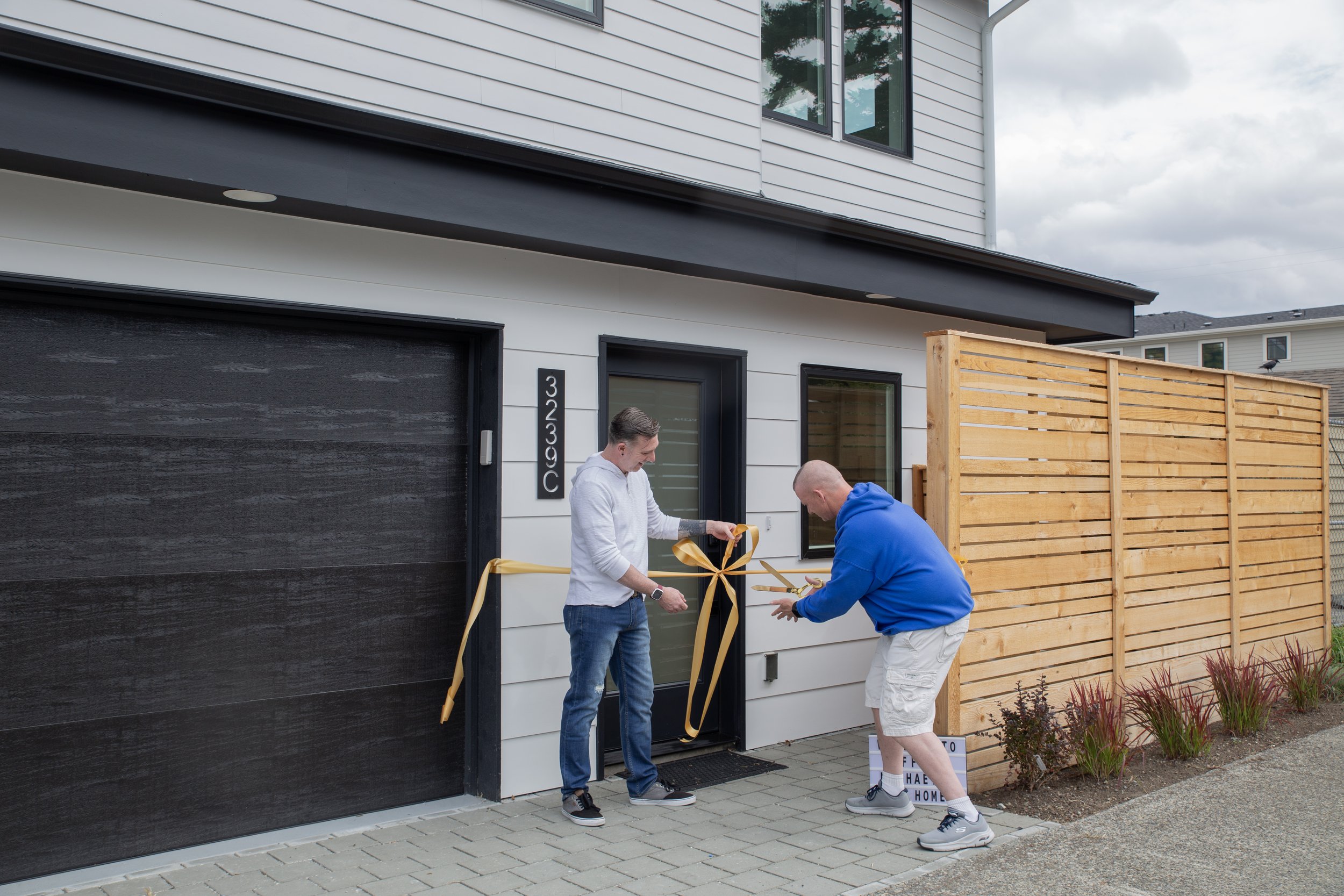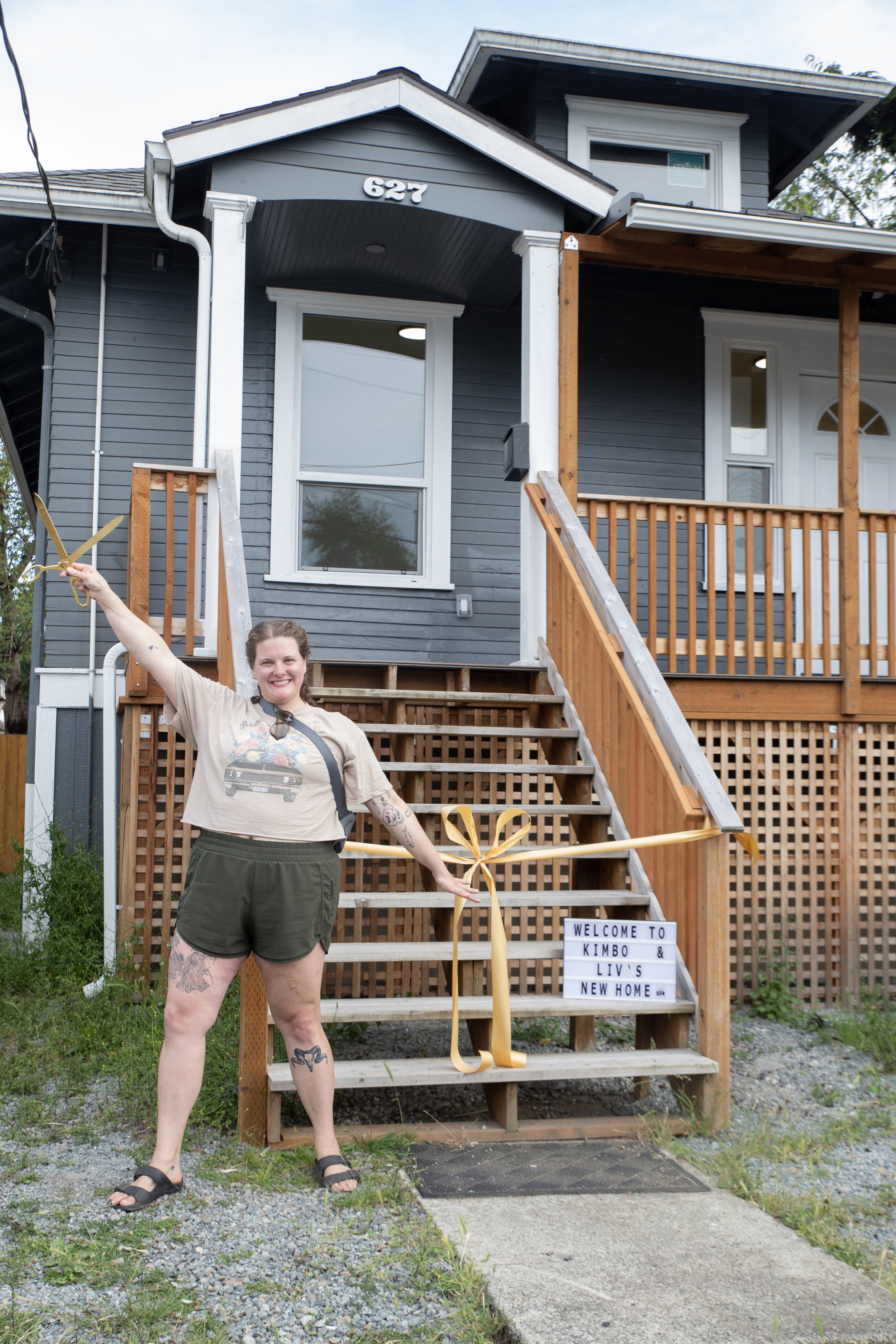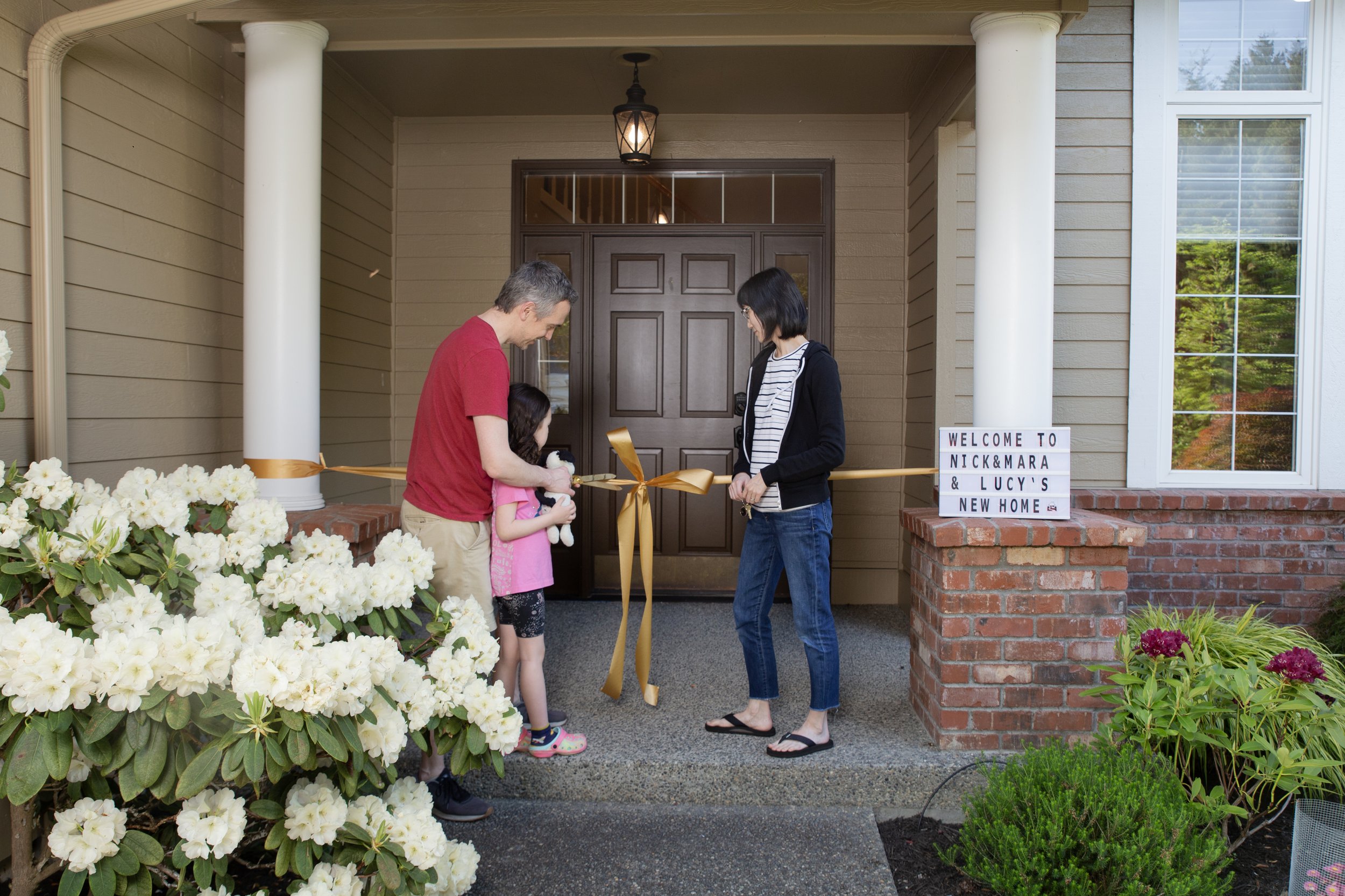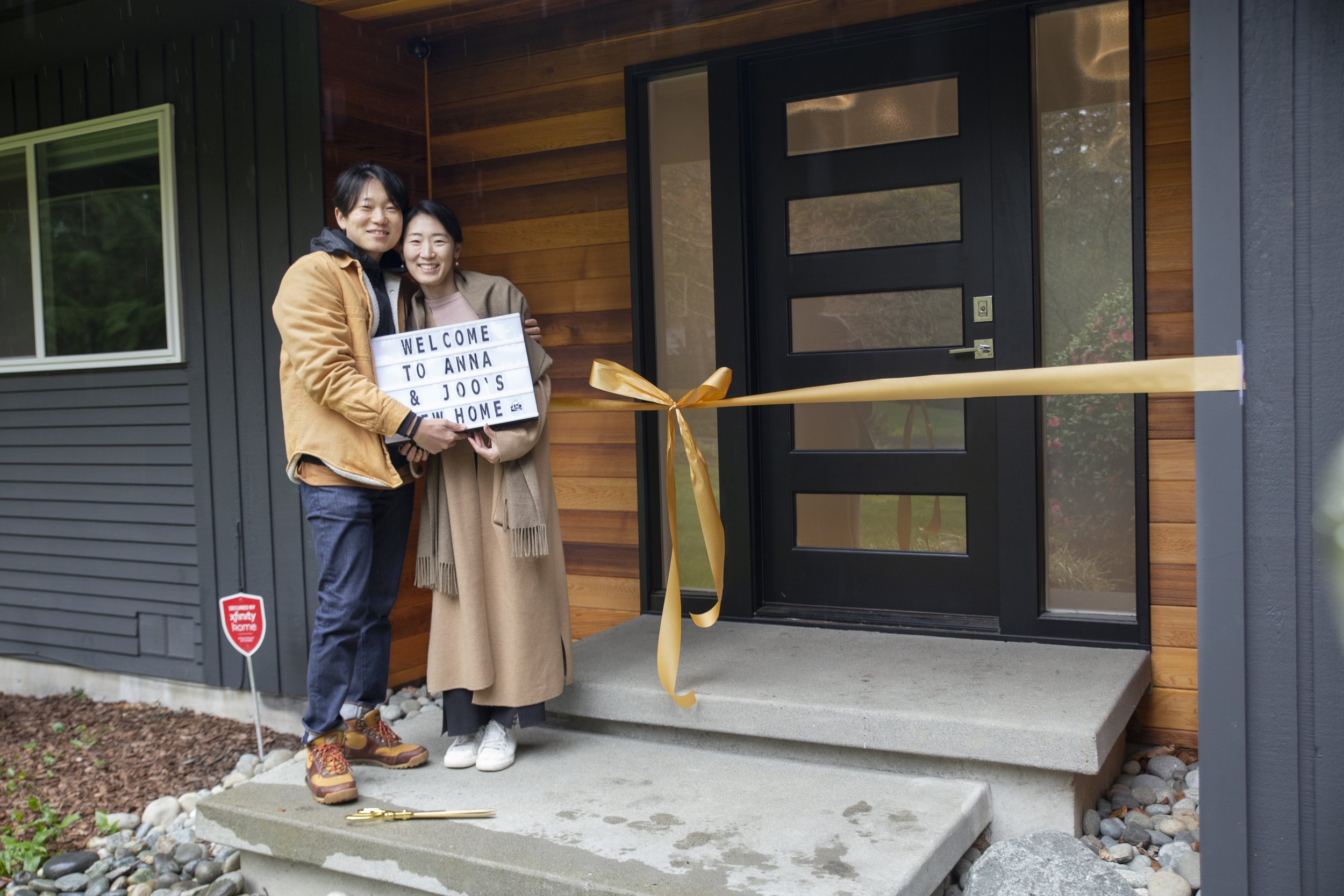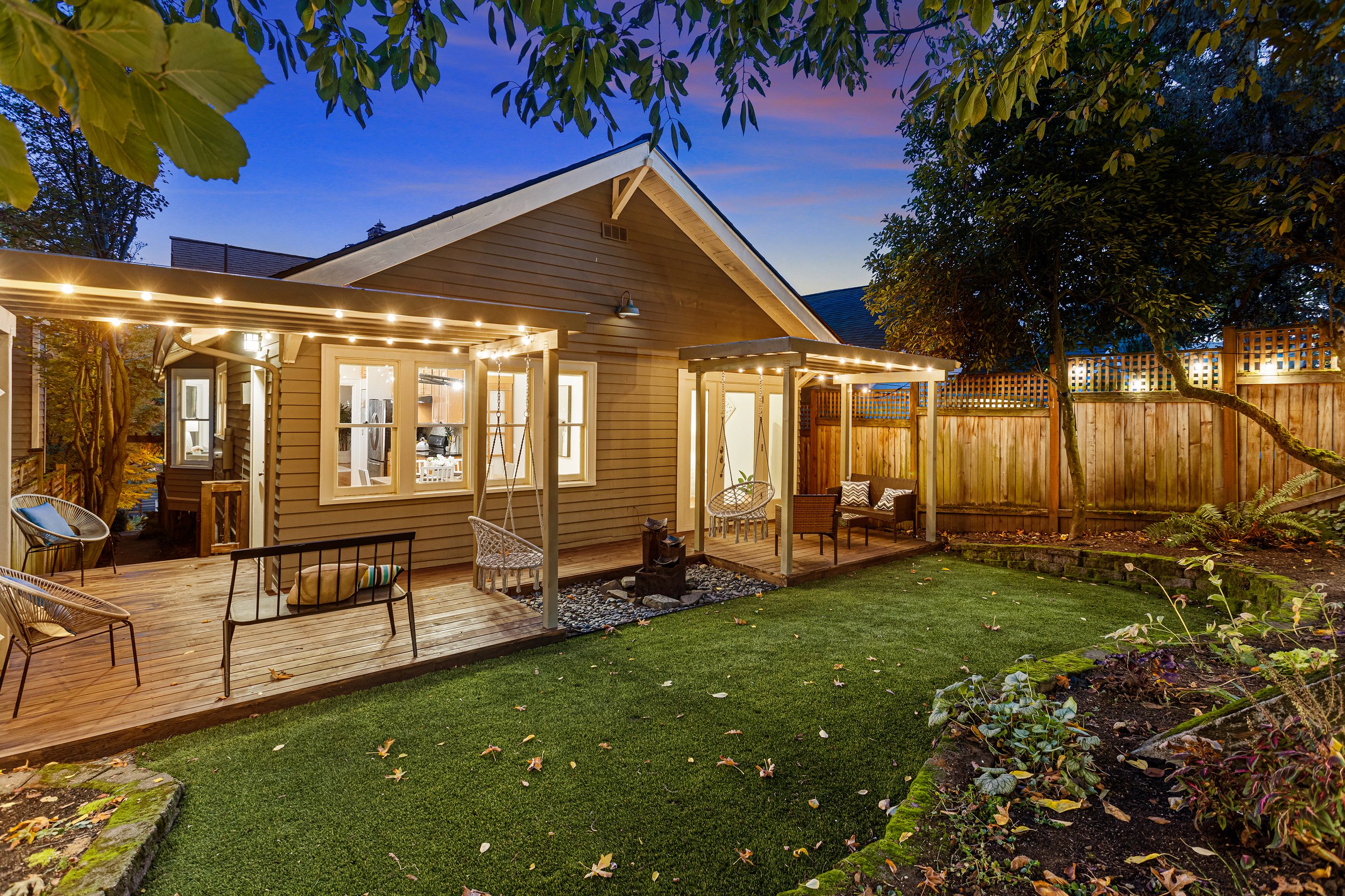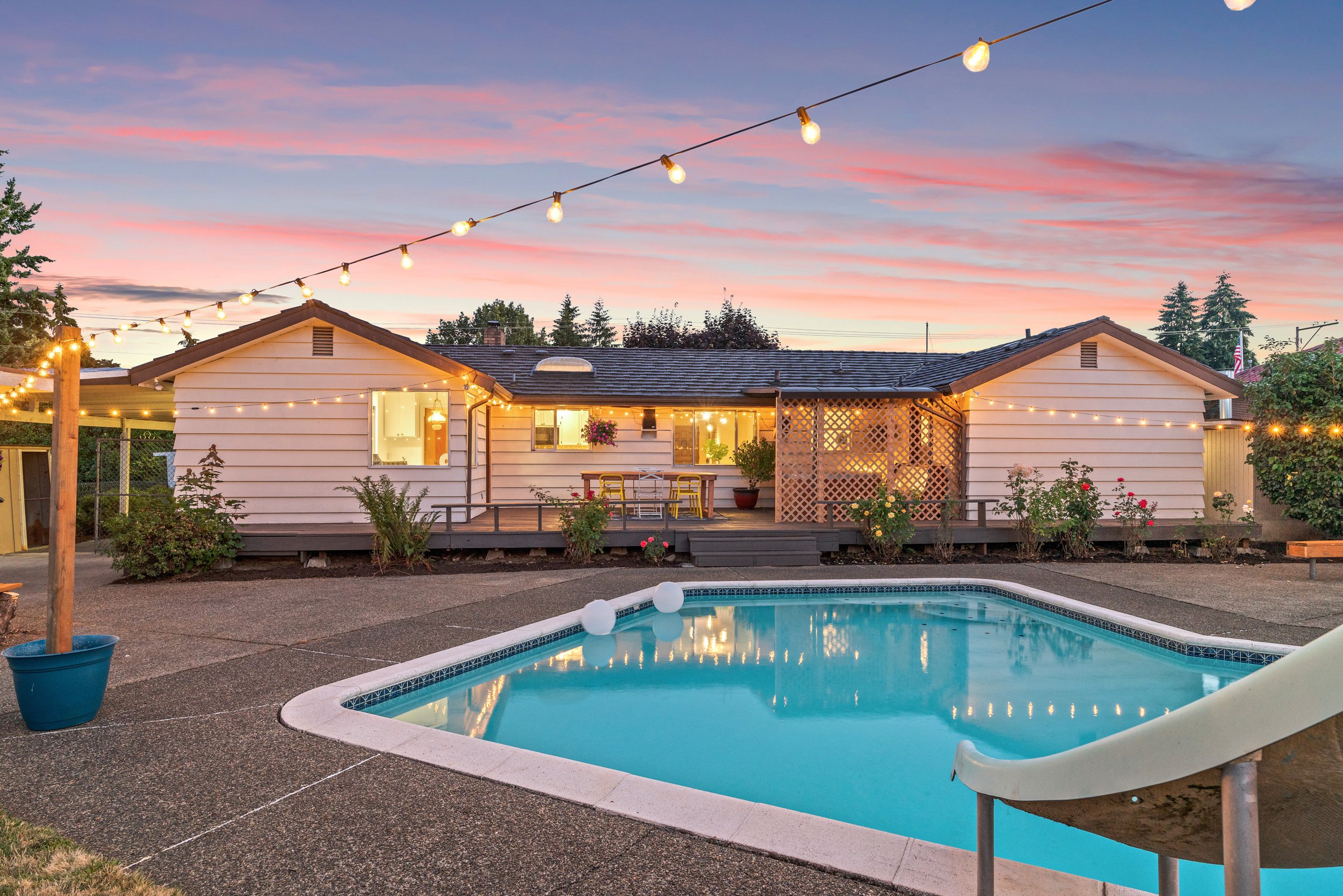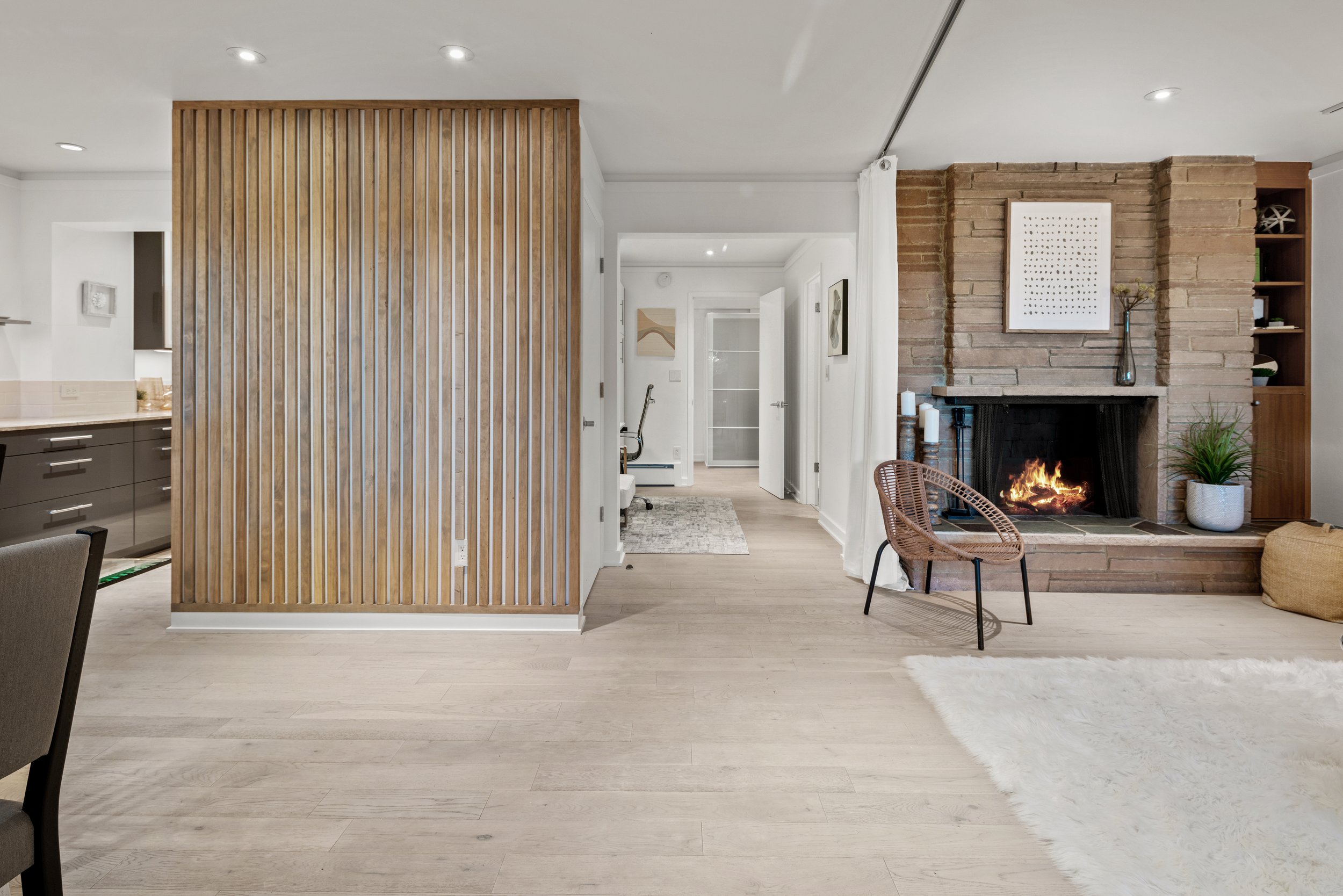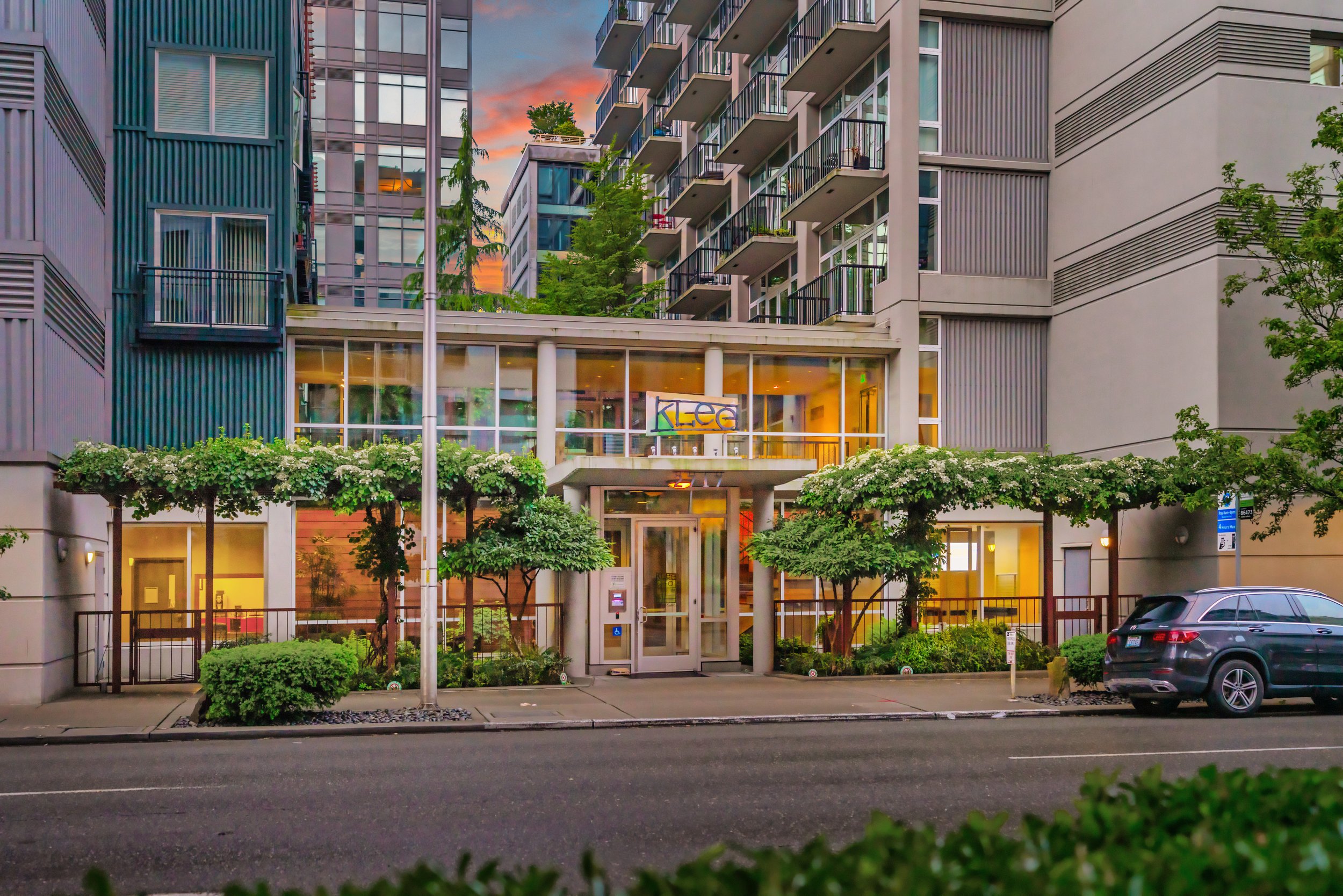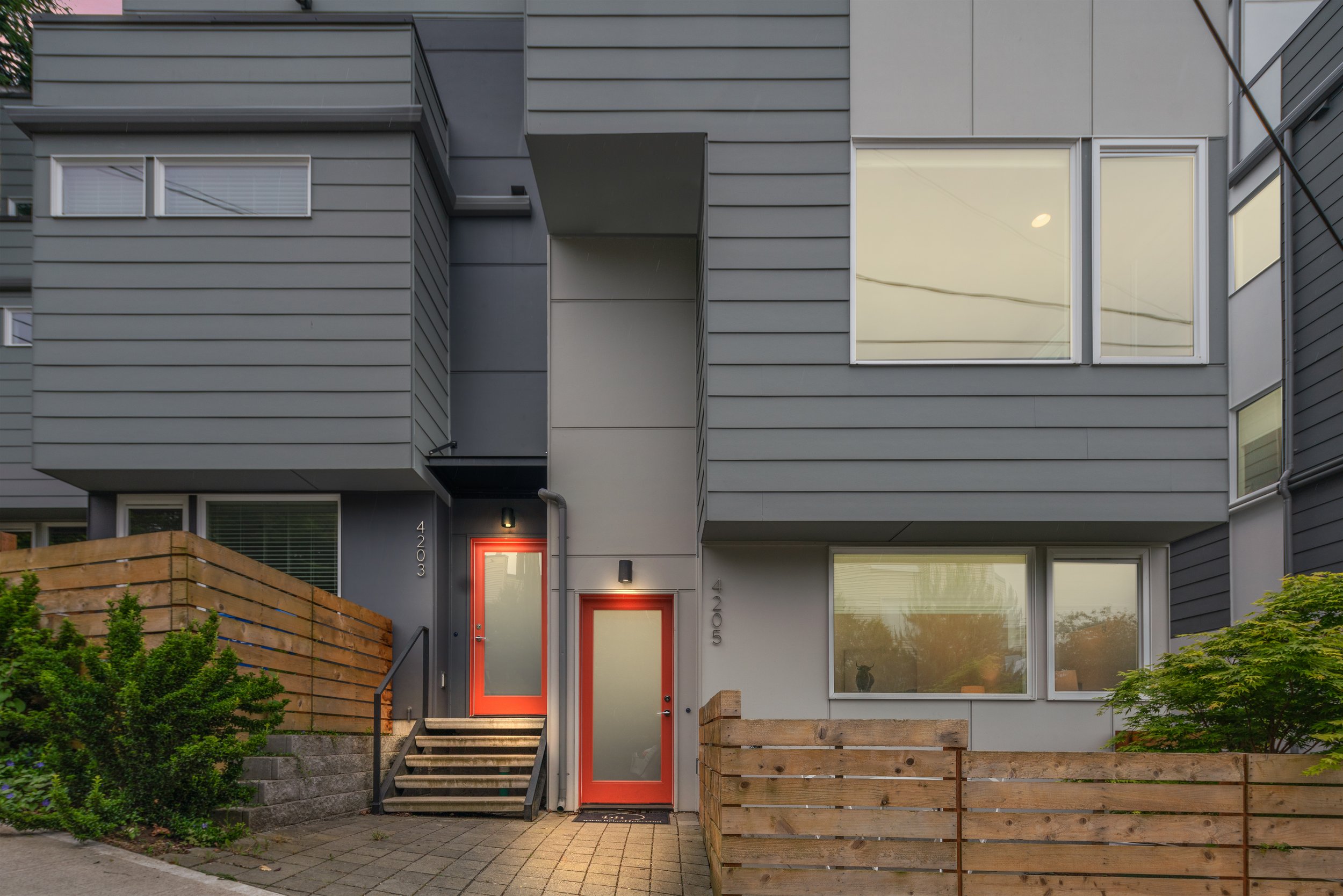Steps to renovating and remodeling your home
Planning and Preparation
Define Goals. Determine the purpose of the remodel. Are you looking to increase space, update aesthetics, improve functionality, or add value to your home?
Budget. Establish a realistic budget, accounting for a buffer to cover unexpected costs. I like to plan for a 20% buffer in case of unforeseen problems or premium upgrades along the way. Also, budget alternative resendency if you think you need to vacate the home for any duration of the remodel due to dust or noise.
Research and Organize Ideas. Consider both style and functionality. Gather ideas and inspiration from magazines, websites, and home improvement shows. Building supply stores and specialty material showrooms are also great places to visit to touch, see, and explore what is available. Look out for home expos in your area such as the Seattle Home & Garden Show.
PRO TIP: Even if you plan on hiring a designer or architect, still have photos ready to share your vision. Even if you plan on hiring contractors without a designer, you really need as many photos and notes organized as you can. They may also charge you less if they feel that the job will be clear and simpler because you have already laid out all the details.
PRO TIP: Download these apps for better productivity
Pinterest: The best at finding, organizing, and sharing ideas from themes to specific details and from individual projects to whole-house remodels
Google: Using Google Lens to search images allows you to identify fixtures, features, and finishes that you don’t know how to recognize.
Home Depot: look up prices, manuals, and design options for any fixture, appliance, or finish
2. Hiring Professionals
Identify Needs: Determine which professionals you need, such as an architect, designer, and contractor.
Designer. A designer works with you on the finishes and features of a space, room, or entire home. Online designer services are more affordable, but the more complex the project or the more demanding a homeowner is, the more you may be disappointed with hiring online. Here’s a great article testing out three online designers: Washington Post. For my more demanding owners or complex projects, reach out to who I recommend for you specifically!
Architect. If you want a designer with more technical knowledge to re-envision entire spaces such as opening rooms, designing additions, or completely building/rebuilding.
Engineer. An engineer helps design specific structural components, such as beams and columns, to carry certain weights. An architect, framing contractor, or general contractor might add an engineer to the team.
General Contractor. A contractor who can plan and oversee the entire project by hiring their favorite or even in-house subcontractors. Look up reviews and ask for recommendations. Especially in the summer, most contractors may be busy and charge for consultations.
Individual tradespeople. You can hire each tradesperson yourself saving you money by managing them yourself and also by having the ability to hire the least expensive tradesperson for each task. If you want to hire tradespeople on your own along the way, you will need all of the materials already chosen so you can tell the tradesperson exact specifications of each material or fixture - Better yet, have it purchased already. For example, if you want to replace a window for a door, have the exact door picked out or purchased already so that you can show the framing contractor (aka framer), what to frame the new opening to.
Research. Check their credentials, get multiple quotes, and review their previous work - most of the best tradespeople won’t have the skill to build a website but will at least show you their previous work through photos. When you’ve chosen someone, ask for proof of licensing, insurance, and bonding (ask your HOA, if any, if they require certain requirements for their insurance/bonding). Look up Washington Professional Insurance and Bonding here.
Contract Agreements. With your chosen professionals, sign contracts outlining the scope of work, timeline, payment schedule, and terms.
PRO TIP: Interview and get estimates from 3 general contractors or 3 of each tradesperson if you plan to manage the project yourself.
PRO TIP: Download these apps to help you find more contractors beyond what I recommend from my list of trusted vendors.
Houzz: Find professionals, shop products, develop ideas
Thumbtack: Enter a project and connect with 1-5 contractors
Contractor Hotline: Small local network of trusted contractors
3. Design and Permits
Detailed Design: For complex projects, work with a designer or architect to create detailed plans and blueprints. For simpler projects, spelling out all materials and measurements on a sheet of paper can help minimize confusion or disagreements with your contractor.
Permits: Apply for necessary permits from your local municipality. This can include building permits, electrical permits, and plumbing permits. Ensure all plans comply with local building codes and regulations. A general contractor will help with this; otherwise, it is the homeowner's responsibility.
PRO TIP: There’s no such thing as a dead end or a hard-no in permitting - You might just have to be creative with how you get to your desired goal. Seattle’s permitting department has a handy webpage for all of your permitting questions. They also have a walk-in office to brainstorm solutions to permitting issues.
PRO TIP: Photos and drawings are worth a thousand words! Especially when I manage my tradespeople who don’t speak English well, I like to provide a folder of printed photos showing exactly what I want done.
4. Pre-Construction
Acquire Materials. If you haven’t already, order all the materials, fixtures, and finishes. This includes flooring, cabinetry, countertops, lighting, and paint.
Logistics: Plan for the logistics of the remodel. This includes setting up a temporary living arrangement if necessary, and preparing the site (e.g., clearing out furniture). I also like to have back up plans in the likely case that projects run long.
PRO TIP: Rent a POD to store everything right outside your home or in your driveway! This can be personal stuff cleared from the home or the building materials itself.
5. Demolition
Site Preparation: Protect areas not being remodeled with barriers and coverings.
Demolition: Tear down non-weight bearing walls, remove old fixtures, and strip out any elements that are being replaced.
PRO TIP: Consolidate trash if you are doing multiple projects and have a place to store trash safely. You can also rent a temporary dumpster. If you ask each tradesperson to remove rubbish, you will be paying for their time each time someone makes a landfill trip which can cost you several or even dozens of extra hours of labor on top of each of the disposal fees.
PRO TIP: Utilize dust control in your home with something like this Zip Wall.
6. Structural Changes
Framing and Carpentry: If adding or removing structural walls, this is when the framing takes place. Creating new spaces or removing weight bearing walls may require inspections.
Electrical and Plumbing: Install or update wiring, outlets, light fixtures, plumbing lines, and fixtures. This may require inspections.
HVAC: Update or install heating, ventilation, and air conditioning systems as needed.
PRO TIP: This is your last chance for customization. Changes in plans may require additional funds and time, but if you came across that “living wall” idea that you fell in love with, schedule a meeting with the GC to share ideas and ask how much more funds and time they would need to implement it.
7. Rebuilding
Insulation and Drywall: Install insulation for energy efficiency, followed by drywall to create walls and ceilings.
Flooring: Install new flooring materials, which can range from hardwood and tile to carpet and laminate.
PRO TIP: By now all of step 8’s items will most likely have been purchased by the tradespeople or GC. Any changes made, you will likely still be paying for any unused items resulting from the change of plan and if you are, make sure the GC or tradespeople leave you the items!
8. Finishing Touches
Cabinetry and Countertops: Install new cabinets and countertops in kitchens and bathrooms.
Painting and Trim: Paint walls, install baseboards, crown molding, and other trim.
Fixtures and Appliances: Install lighting fixtures, faucets, sinks, and appliances.
Final Touches: Complete any remaining details, such as hardware installation, final paint touch-ups, and cleaning.
PRO TIP: Finishing Touches are the most important - They can hide oftentimes imperfect framing and surfaces but you will never hide imperfect paint, fixtures, and trim. Even in my flipping days, I would go cheap on everything else EXCEPT hire the best for finishing work or do it myself.
PRO TIP: Don’t rush a timeline even if it’s been delayed. Delays are common in renovations and especially more complex remodels but unless you want “only average” or “below average” work, resist being too aggressive on maintaining the timeline. Show that you’re unsatisfied with delays, but don’t encourage the contractor to prioritize speed over quality.
9. Inspection and Handover
Final Inspection: Have the work inspected by local authorities to ensure it meets building codes and permit requirements.
Walkthrough: Do a final walkthrough with your contractor to identify any issues or unfinished work.
Punch List: Create a punch list of items that need to be fixed or completed. Ensure all issues are addressed before making the final payment.
PRO TIP: Look up open permits before paying the contractor. If a contractor opened a permit but didn’t close it out, it is the homeowner’s responsibility to make sure it is closed out. Click here to look up open Seattle permits on your address.
10. Post-Remodel
Cleaning: Conduct a thorough cleaning of the remodeled area. Unless it was a service the General Contractor outlined, it will be the homeowner’s responsibility.
Decorating: Furnish and decorate the space to your taste.
Maintenance: Learn how to maintain each new surface. Some things will need adjusting (eg frameless shower doors within 1yr), touchups (hairline cracks in paint of new wall), and recoating (grout sealers after a couple days). Even new appliances (eg. on-demand water heaters may need descaling every year and heat pumps may need servicing 2x/yr if it’s your primary heat AND cooling source). Follow my monthly maintenance for recommendations and reminders to maintain your home!





















